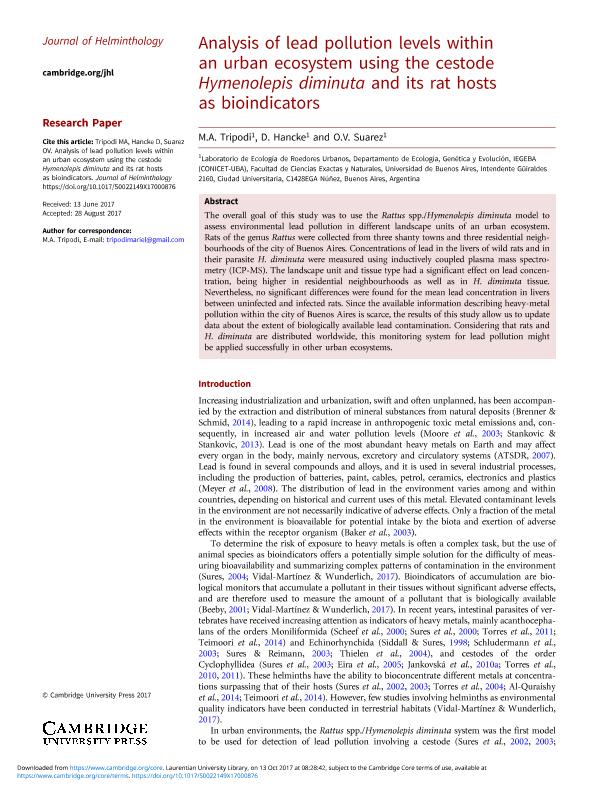Artículo
Analysis of lead pollution levels within an urban ecosystem using the cestode Hymenolepis diminuta and its rat hosts as bioindicators
Fecha de publicación:
09/2018
Editorial:
Cambridge University Press
Revista:
J. Helminthol.
ISSN:
0022-149X
Idioma:
Inglés
Tipo de recurso:
Artículo publicado
Clasificación temática:
Resumen
The overall goal of this study was to use the Rattus spp./Hymenolepis diminuta model to assess environmental lead pollution in different landscape units of an urban ecosystem. Rats of the genus Rattus were collected from three shanty towns and three residential neighbourhoods of the city of Buenos Aires. Concentrations of lead in the livers of wild rats and in their parasite H. diminuta were measured using inductively coupled plasma mass spectrometry (ICP-MS). The landscape unit and tissue type had a significant effect on lead concentration, being higher in residential neighbourhoods as well as in H. diminuta tissue. Nevertheless, no significant differences were found for the mean lead concentration in livers between uninfected and infected rats. Since the available information describing heavy-metal pollution within the city of Buenos Aires is scarce, the results of this study allow us to update data about the extent of biologically available lead contamination. Considering that rats and H. diminuta are distributed worldwide, this monitoring system for lead pollution might be applied successfully in other urban ecosystems.
Palabras clave:
Rattus Spp.
,
Order Cyclophyllidea
,
Biological Monitors
,
Lead Pollution
Archivos asociados
Licencia
Identificadores
Colecciones
Articulos(OCA CIUDAD UNIVERSITARIA)
Articulos de OFICINA DE COORDINACION ADMINISTRATIVA CIUDAD UNIVERSITARIA
Articulos de OFICINA DE COORDINACION ADMINISTRATIVA CIUDAD UNIVERSITARIA
Citación
Tripodi, Mariel Alejandra; Hancke, Diego; Suarez, Olga Virginia; Analysis of lead pollution levels within an urban ecosystem using the cestode Hymenolepis diminuta and its rat hosts as bioindicators; Cambridge University Press; J. Helminthol.; 92; 5; 9-2018; 544-548
Compartir
Altmétricas




